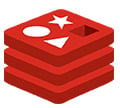In this tutorial, we will show you how to install Elgg on a CentOS 7 Cloud VPS.

Elgg also offers many additional features, including blogging, micro-blogging, networking, groups, and much more. Let’s start installing Elgg.
In this tutorial, we will show you how to install Elgg on a CentOS 7 Cloud VPS.

Elgg also offers many additional features, including blogging, micro-blogging, networking, groups, and much more. Let’s start installing Elgg.
In this tutorial, we will be installing Anaconda Python on one of our fully managed CentOS 7 Cloud VPSes.

Here are some of Anaconda’s capabilities in terms of scientific computing and a wide range of data processing:
Anaconda is developed and maintained by Anaconda, Inc. under the new BSD license and is written using Python.
In this tutorial, we are going to build and install Redis on our CentOS 7 Cloud VPS from source.

On a fresh Linux installation, you may have MySQL already installed on your system. While that might be enough for most users, sometimes the newest version of the query language is necessary for some software to work. This tutorial will show you how to install MariaDB as a drop-in replacement for MySQL for all versions of CentOS, and all versions of MariaDB.
In this article, we are going to show you how to install GitLab on CentOS 7. GitLab is Rails-based open source repository manager developed by GitLab Inc. GitLab is very useful for teamwork because is web-based git repository manager and it’s easy to deploy, code or test applications. It supports functions such as code reviews, issue tracking and activity feeds and that’s just a few of the features this application has. GitLab comes in Community Edition (self-hosted and free) and Enterprise Edition (self-hosted and paid).
In this tutorial will show you how to install NextCloud 13 on CentOS 7 . NextCloud is free and open-source file sharing and communication self-hosted software. It is used as storage of personal files, photos, songs, contacts and many other types of files and the best part is that you have access to them at any time and you can also share them with your friends/colleges. NextCloud is highly secured collaboration software that is HIPPA and GDPR compliant. It is the best alternative of the popular application ownCloud. Let’s get started with the tutorial.
We’ll show you, how to set up SSH Keys on CentOS 7. SSH (Secure Socket Shell) is an open source, UNIX based, network protocol that provides users with a secure and encrypted way to login to remote computers, transfer files securely between the computers (SCP), command execution on remote servers, automate tasks between multiple servers on the network, and much more. SSH supports several authentication methods. In this tutorial we will configure SSH with public key authentication on CentOS 7 VPS, so instead of logging to your CentOS 7 VPS as usual using a username and password, you will be able to authenticate using a trusted SSH key which will increase the security of your server.
As you already know, Pelican is not a content management system like WordPress, it is a Python static blog generator – there is not database, nor a web interface. We use reStructuredText or Markdown to create the posts and pages and the entire content is flat-file based and managed by the CLI. This type of storage gives you the chance to manage the posts and if necessary to migrate them. As Scriptogram appears to be Pelican-based, you can move the files and posts (including permalinks) without changing them at all. Today we will show you how to install Pelican on CentOS 7 using Python 3. Let’s get started!
We’ll show you, How to install YOURLS on Centos 7. Your Own URL Shortener or simply YOURLS is very useful set of PHP scripts that will allow you to run your self-hosted URL shortening service. In this tutorial we will install and configure YOURLS on a CentOS 7 VPS with Apache web server, MariaDB and PHP, which is pretty fast and straightforward.
Open Real Estate is a free and open source app that you can use to build websites for real estate agencies and realtors. It’s built on the Yii framework and it has all the features you’d need out of the box. It is fairly easy to install Open Real Estate on a CentOS 7 Cloud VPS. The installation process should take about 5-10 minutes if you follow the very easy steps described below.